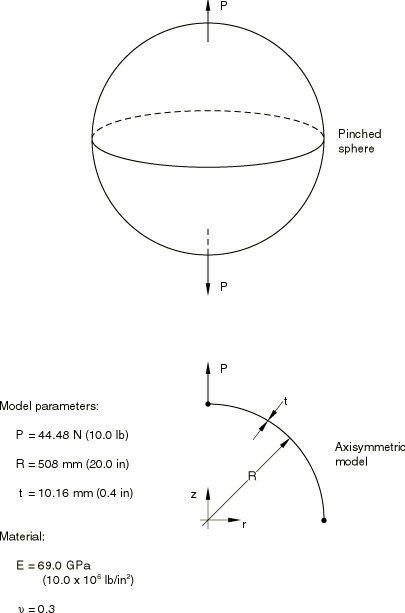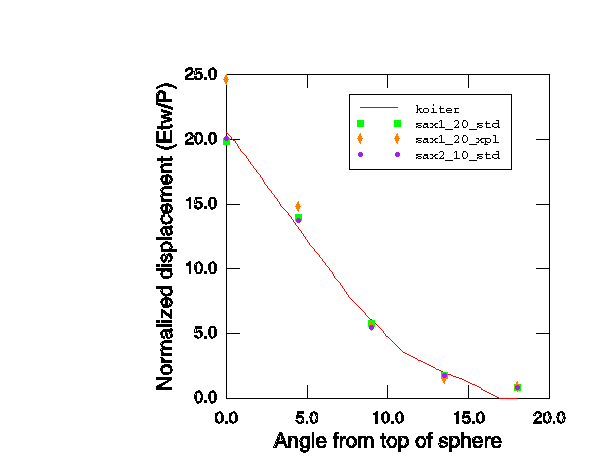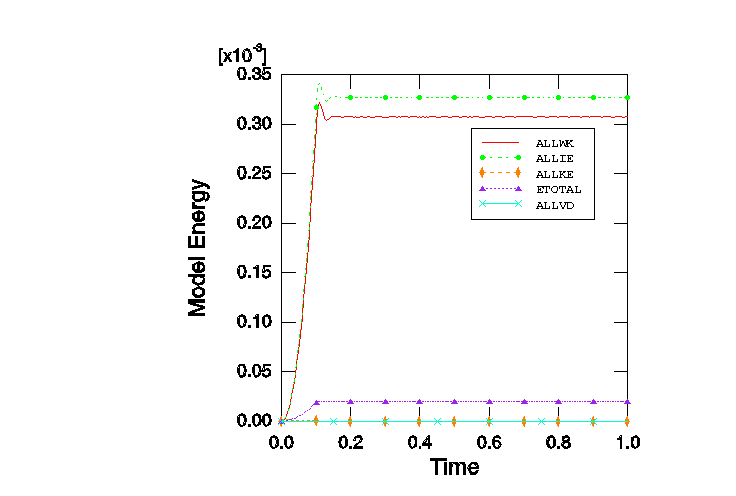Problem description
The physical problem consists of a hollow sphere with opposing point loads acting along a diameter of the sphere (see Figure 1). Taking advantage of symmetry in the model, only one-half of the sphere is modeled. The meshes used for this example are uniform, although in an actual problem that exhibits such localized response the mesh should be refined to concentrate the elements in the region where the strain gradients are most severe. Four axisymmetric meshes are used for the Abaqus/Standard analysis. For the linear 2-node element, SAX1, the meshes have 10 and 20 elements. For the quadratic 3-node element, SAX2, the meshes have 5 and 10 elements. Two three-dimensional models made up of a single strip of shell or continuum shell elements that subtend an arc of 6° in the circumferential direction are also tested in Abaqus/Standard. Two SAX1 meshes are used for the Abaqus/Explicit analysis, one with 10 elements and the other with 20 elements.
In the Abaqus/Explicit analysis the quasi-static pinching load is applied as a ramp function during the initial 10% of the time period for the step and is then held constant for the remainder of the step. Additionally, viscous pressure loading is applied to the structure to damp out dynamic effects. The time period for the step and the viscous pressure are chosen to obtain an optimal static solution.


